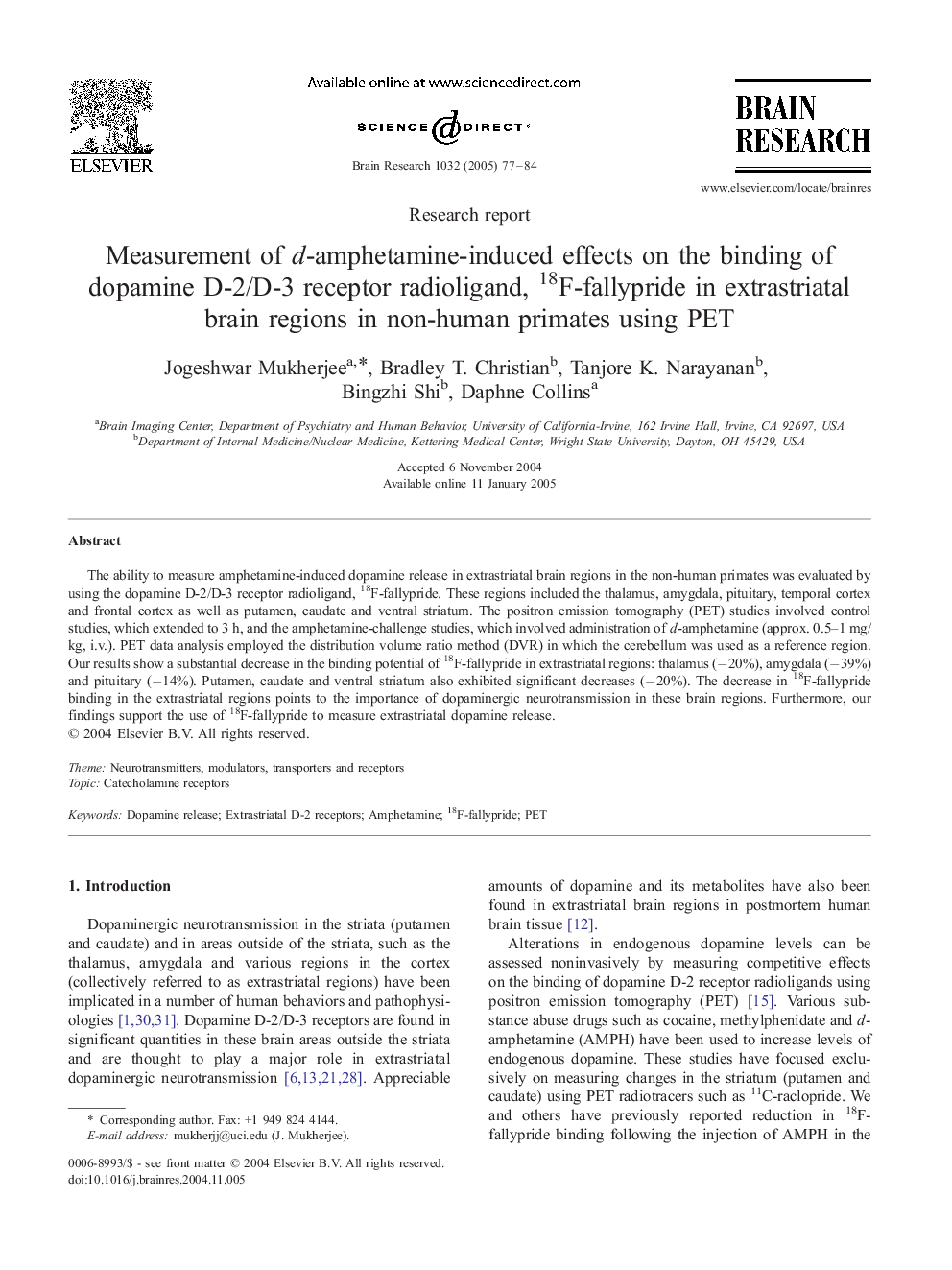| Article ID | Journal | Published Year | Pages | File Type |
|---|---|---|---|---|
| 9416676 | Brain Research | 2005 | 8 Pages |
Abstract
The ability to measure amphetamine-induced dopamine release in extrastriatal brain regions in the non-human primates was evaluated by using the dopamine D-2/D-3 receptor radioligand, 18F-fallypride. These regions included the thalamus, amygdala, pituitary, temporal cortex and frontal cortex as well as putamen, caudate and ventral striatum. The positron emission tomography (PET) studies involved control studies, which extended to 3 h, and the amphetamine-challenge studies, which involved administration of d-amphetamine (approx. 0.5-1 mg/kg, i.v.). PET data analysis employed the distribution volume ratio method (DVR) in which the cerebellum was used as a reference region. Our results show a substantial decrease in the binding potential of 18F-fallypride in extrastriatal regions: thalamus (â20%), amygdala (â39%) and pituitary (â14%). Putamen, caudate and ventral striatum also exhibited significant decreases (â20%). The decrease in 18F-fallypride binding in the extrastriatal regions points to the importance of dopaminergic neurotransmission in these brain regions. Furthermore, our findings support the use of 18F-fallypride to measure extrastriatal dopamine release.
Keywords
Related Topics
Life Sciences
Neuroscience
Neuroscience (General)
Authors
Jogeshwar Mukherjee, Bradley T. Christian, Tanjore K. Narayanan, Bingzhi Shi, Daphne Collins,
